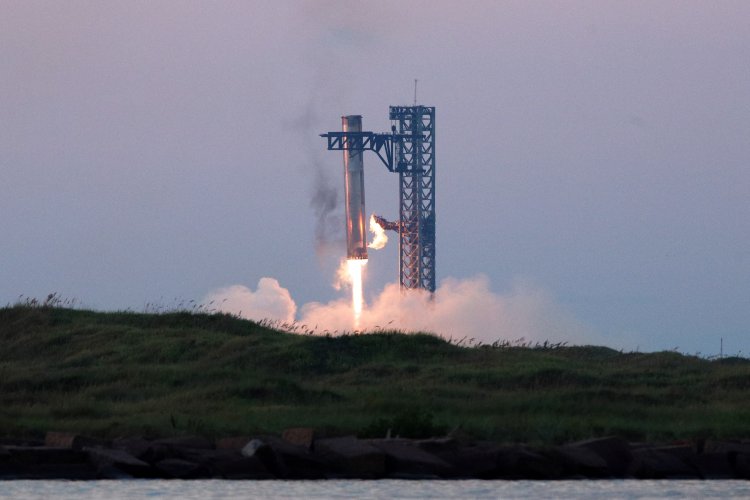SpaceX lands Starship booster using giant arms

SpaceX in its fifth Starship test flight returned the rocket's towering first stage booster back to its Texas launch pad for the first time using giant metal arms, achieving another novel engineering feat in the company's push to build a reusable moon and Mars vehicle.
The rocket's first stage "Super Heavy" booster lifted off at 7:25 a.m. local time from SpaceX's Boca Chica, Texas launch facilities, sending the Starship second stage rocket toward space before separating at an altitude of roughly 70 km to begin its return to land.
The Super Heavy booster re-lit three of its 33 Raptor engines to slow its speedy descent back to SpaceX's launch site, as it targeted the launch tower it had blasted off from. The tower is fitted with two large metal arms.
With its engines roaring, the 71 meters-tall Super Heavy booster fell into the launch tower's arms, hooking itself in place by its four forward grid fins it used to steer itself through the air.
The novel catch-landing method is the latest advance in SpaceX's test-to-failure development campaign for a fully reusable rocket designed to loft more cargo into orbit, ferry humans to the moon for NASA and eventually reach Mars - the ultimate destination envisioned by CEO Elon Musk.
The US Federal Aviation Administration approved SpaceX's launch license for the Starship test, following weeks of tension between the company and its regulator over the pace of launch approvals and fines related to SpaceX's workhorse rocket, the Falcon 9.
Starship, first unveiled by Musk in 2017, has exploded several times in various stages of testing on past flights, but successfully completed a full flight in June for the first time. The two-stage rocket's Super Heavy booster lifted off from Texas sending the second stage - Starship - on a near-orbital path bound for the Indian Ocean some 90 minutes later, facing a fiery hypersonic reentry.















